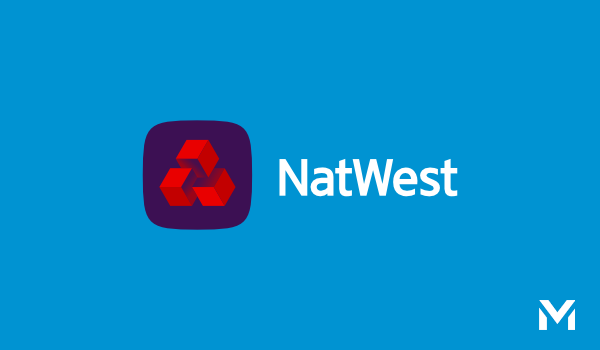
When you’re thinking about taking out a personal loan, there’s usually something real behind it. Maybe you’ve outgrown your old flat and want to give it a proper upgrade. Or you’re stuck paying off multiple debts and just want one manageable monthly bill. Whatever your reason, a loan is never just a number — it’s about timing, priorities, and making a financial move you’ll feel good about in six months.
That’s why understanding how the NatWest Personal Loan works in detail — not just the flashy bullet points — matters. This isn’t just about getting cash quickly; it’s about control, clarity, and using the loan smartly.
How to use your NatWest Personal Loan: practical ideas with real value
You’re not limited to one purpose — and that’s part of what makes this product so flexible. Borrowers typically use their loan for:
- Home upgrades: new flooring, energy-efficient heating, kitchen refits
- Vehicle costs: buying a car, fixing up an old one, or paying insurance upfront
- Debt consolidation: combine credit cards or overdrafts into one repayment
- Major life events: weddings, tuition, family emergencies
- Unexpected expenses: from vet bills to dental work
The best use? Something that pays you back in peace of mind or financial clarity over time.
Five smart ways to make your NatWest Personal Loan go further
1. Get your personalised quote first
Never skip the soft search. It gives you your real rate and monthly cost without a mark on your credit file.
2. Know the APR banding logic
NatWest tends to offer better APRs for loan amounts between £7,500 and £15,000. Borrowing £8,000 might actually cost less than £7,000 due to the rate tier.
3. Consider a payment break (wisely)
You can opt for a three-month pause before repayments begin. It’s helpful if you’re switching from other debts or covering a short-term cost — but remember, interest still builds.
4. Apply early in the day
Applications accepted before 5:45 pm on weekdays can get same-day funding. It’s not guaranteed, but it often happens.
5. Plan for early repayment
There is a fee — usually 58 days’ interest (or 28 if the loan is under a year) — but over time, early repayment almost always saves you money if you can manage it.
Maximising value: the repayment strategy that works
Once you’ve got the NatWest Personal Loan, what’s next?
- Budget around your monthly repayment — it’s fixed, so you can plan ahead.
- Round up payments if you can — an extra £20 a month can shorten the term significantly.
- Use the online account dashboard to track progress.
- If you get a bonus or tax refund, consider using it to settle part of the balance early.
And always be mindful of overextending. Just because you can borrow £30,000 doesn’t mean you should. Keep the repayment comfortable and your stress levels low.
Alternatives and comparisons worth knowing
Sometimes a NatWest Personal Loan isn’t the best fit. Here’s how it stacks up:
| Product Type | When It’s Better | Trade-offs |
| 0% Balance Transfer Card | For short-term debt with fast repayment | Fees apply, and intro rate ends quickly |
| Credit Union Loan | For small amounts with lower income or thin credit | May take longer to approve |
| Overdraft | For short-term borrowing under £1,000 | Interest rates often much higher |
| Secured Loan | For larger projects or those with limited credit | Your home is at risk if you don’t repay |
Who qualifies – and what you’ll need

To be eligible for a NatWest Personal Loan, you must:
- Be at least 18 and live in the UK permanently
- Have a UK bank account (preferably with NatWest for higher limits)
- Be applying in your own name
- Not be bankrupt or under a debt arrangement
- Provide proof of income (employment or self-employed accepted)
Your rate and approval will depend on your credit history and income — so it’s not one-size-fits-all.
How to apply: step-by-step
- Visit NatWest’s personal loan page
Use the Quick Quote tool — no impact on your credit score. - Enter your loan details
Amount, term and purpose. You’ll see an estimated monthly cost instantly. - Adjust until it fits
Play with the sliders until you find a comfortable repayment plan. - Submit your application
If you’re happy with the offer, complete the full application. This is where the hard credit check happens. - Accept your final offer
Review the terms. Once you sign, the funds are usually sent within hours — especially if before 5:45 pm.
FAQ – Questions people rarely ask (but should)
Can I apply if I’ve missed payments before?
Yes, but your credit history will influence the APR or whether you’re approved.
What if I change jobs after applying?
If you’ve already been approved and signed the agreement, it won’t affect the loan.
Can I increase the amount later?
Yes — NatWest offers “top-up loans.” Your current loan is closed, and a new one is opened with the updated amount.
Does the loan impact mortgage applications?
Yes. Any personal loan affects your credit file and debt-to-income ratio — be mindful if you’re planning to buy a home soon.
Can I repay using a lump sum?
Absolutely. Just be aware of the early repayment charge — usually small compared to the interest you’d save.
Final recommendation: when this loan makes sense
If you’re already a NatWest Personal Loan customer and need reliable access to money, the NatWest Personal Loan offers real advantages: personalised rates, same-day funding, flexible terms and a fully online process. It’s especially strong for consolidating higher-interest debts or financing home projects without the hassle of security or asset checks.
But it’s not for every scenario. If you need money short-term or your credit history is patchy, a credit union or 0% credit card might be better. And always run the numbers — your rate may vary, and early repayment penalties, though modest, should be factored in.
If you’re ready to borrow smart, not just fast — this is a solid option.



 AIB Personal Loan: Everything You Need To Know Before Applying <p class='sec-title' style='line-height: normal; font-weight: normal;font-size: 16px !important; text-align: left;margin-top: 8px;margin-bottom: 0px !important;'> Discover all the insider details about the AIB Personal Loan UK, including expert tips, eligibility requirements, and the smartest ways to maximise value. </p>
AIB Personal Loan: Everything You Need To Know Before Applying <p class='sec-title' style='line-height: normal; font-weight: normal;font-size: 16px !important; text-align: left;margin-top: 8px;margin-bottom: 0px !important;'> Discover all the insider details about the AIB Personal Loan UK, including expert tips, eligibility requirements, and the smartest ways to maximise value. </p>  Virgin Money Personal Loan – Full Guide, FAQ, Hacks & Alternatives (2025) <p class='sec-title' style='line-height: normal; font-weight: normal;font-size: 16px !important; text-align: left;margin-top: 8px;margin-bottom: 0px !important;'> If you're considering a Virgin Money personal loan to consolidate debt, finance a major life event </p>
Virgin Money Personal Loan – Full Guide, FAQ, Hacks & Alternatives (2025) <p class='sec-title' style='line-height: normal; font-weight: normal;font-size: 16px !important; text-align: left;margin-top: 8px;margin-bottom: 0px !important;'> If you're considering a Virgin Money personal loan to consolidate debt, finance a major life event </p>  M&S Loan Step-by-Step Application Walkthrough <p class='sec-title' style='line-height: normal; font-weight: normal;font-size: 16px !important; text-align: left;margin-top: 8px;margin-bottom: 0px !important;'> Personal loans with fixed rates and trusted M&S service </p>
M&S Loan Step-by-Step Application Walkthrough <p class='sec-title' style='line-height: normal; font-weight: normal;font-size: 16px !important; text-align: left;margin-top: 8px;margin-bottom: 0px !important;'> Personal loans with fixed rates and trusted M&S service </p>